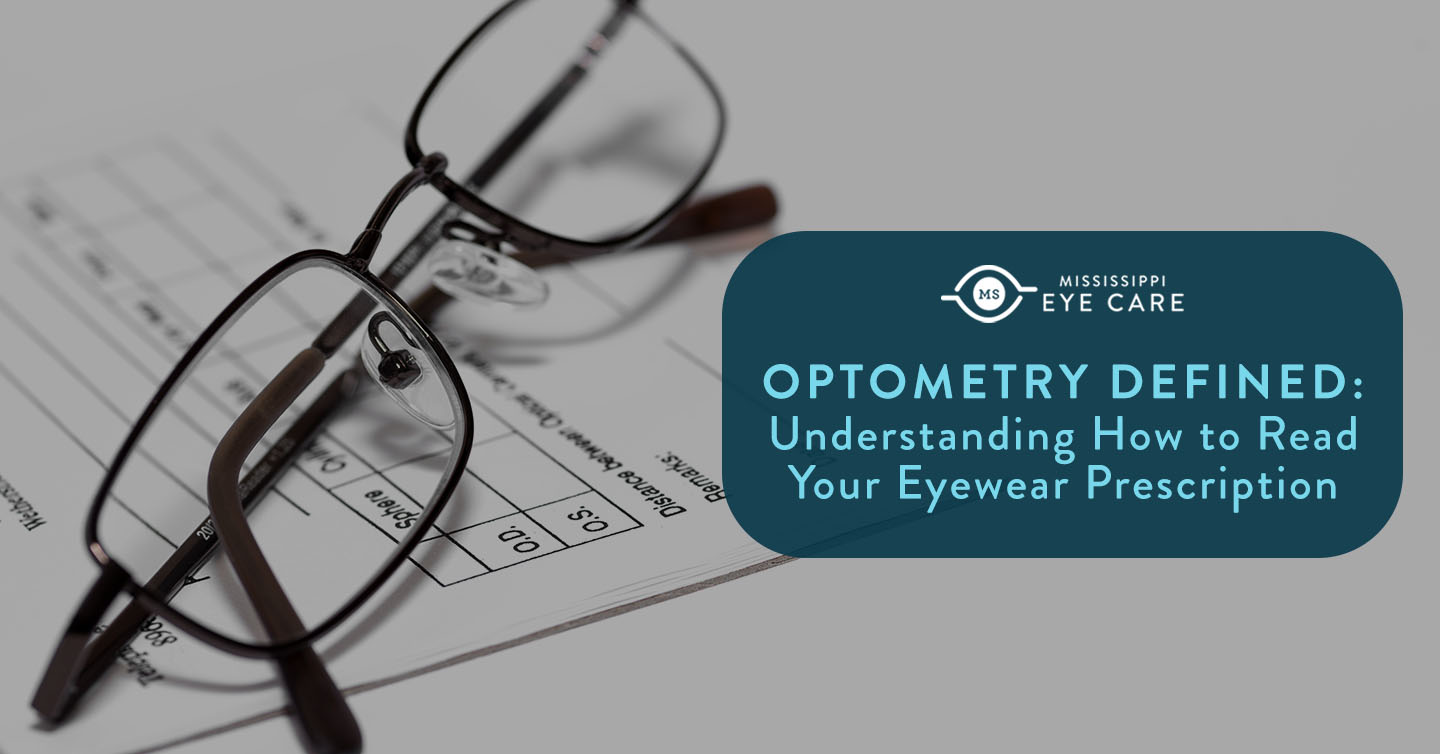You’ve seen your optometrist. You’ve had your annual comprehensive eye exam. Now, understanding how to read your eyewear prescription could be a whole other matter.
What am I looking at?
If you find yourself baffled by the combination of numbers, letters and plus-minus symbols, don’t worry. You are not alone. The odd series can be confusing. However, understanding how to read your eyewear prescription is essential.
Knowing what you are looking at when it comes to your prescription helps you gain a better understanding of your vision needs. Typically, an eyewear prescription looks like a chart, featuring abbreviations and possibly positive or negative symbols in front of numbers. Together, the data provides clear instructions for either your glasses or your contact lenses.
What does it all mean?
First of all, you may notice two main abbreviations along the side of your prescription: OD and OS. To clarify, OD stands for “oculus dexter,” the Latin phrase for the right eye. OS is short for “oculus sinister,” which is Latin for left eye.
Another variation could be OU for “oculus uterque,” or both eyes, if your prescription happens to be the same for each eye.
Next, you could see a column with the word “sphere” or “SPH.” The sphere shows the lens power you need to see clearly. If there is a negative sign in front of the number, it means you are nearsighted. If there’s a positive sign, you are farsighted.
In addition, your prescription could include “CYL,” which stands for cylinder. This number specifies the lens power needed to correct astigmatism. If the column is blank, you don’t have an astigmatism. But if you do have astigmatism, your prescription will also include an axis number, which indicates the angle of the lens.
Other notations could be “Add” and “Prism.” Under “Add,” any additional lens powers are listed. For instance, some adults over 40 may prefer not to carry an extra pair of reading glasses. Instead, they opt for bifocals. So, their reading vision is corrected through the lower half of the lens.
On the right side of a prescription, there can be a prism field, which is for those who have double vision, for example. A unique kind of correction is included in the lens, as noted in that specific section.
Summary
Before you work on understanding how to read your eyewear prescription, make sure your eyewear prescription is up-to-date. Visit your local Mississippi Eye Care clinic for your next eye exam. Not only will we be happy to provide you with a current prescription, but we’ll be happy to review the specifics of both your glasses and contact lenses prescriptions too. For more eye care tips, keep reading our blogs.




